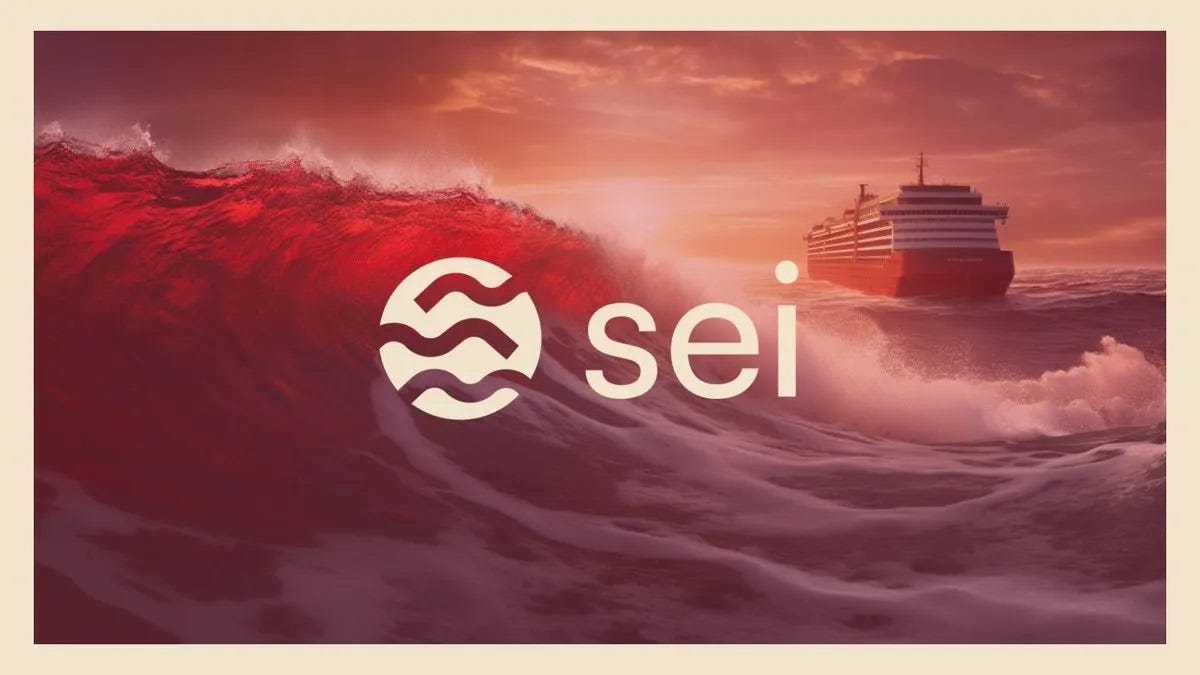SEI vs Giants
Methodology
In this comprehensive analysis, we will scrutinize the SEI Chain and draw comparisons with four other prominent blockchain networks, namely Ethereum, Polygon, Near, and Osmosis. Our objective is to assess how SEI Chain performs in relation to these industry giants and to gauge its overall health. To accomplish this, we will employ a carefully crafted set of key metrics, each offering valuable insights into the networks' functionalities and user experiences. These metrics encompass a wide spectrum:
-
Daily User Counts: Daily user counts provide insights into the network's user engagement and growth. Higher counts often signify a healthy and thriving network.
-
Transaction Processing Speed (TPS - Transactions Per Second): TPS measures the network's capacity to process transactions rapidly. A higher TPS indicates a network's ability to handle a large volume of transactions efficiently.
-
Transaction Success Rates: Transaction success rates indicate the percentage of transactions that are completed successfully without errors or disruptions. Lower failure rates are indicative of a robust network.
-
USDC Usage: We have analyzed the utilization of USDC (USD Coin) across different blockchain networks. This includes:
a. Total USDC Volume: This metric assesses the total value of USDC transactions on the network since a specified date. Higher volumes often signify significant financial activity within the ecosystem.
b. Highest Daily USDC Transfer: We identified the day with the highest USDC transfer activity on each network, highlighting peak transaction days and their associated values.
c. Average USDC Transfer Volume per Transaction: This metric measures the average value of USDC transferred per transaction, providing insights into the typical transaction size on the network.
d. Average USDC Transfer Volume per Sender: It indicates the average amount of USDC transferred per sender, shedding light on the behavior of individual users or entities on the network.
-
Transaction Fees: We have also assessed transaction fees on these networks:
a. Transaction Fee per Transaction: This metric calculates the cost incurred for each transaction on the network, which can affect the attractiveness of the network for users.
b. Transaction Fee per Block: It measures the average transaction fee for each block on the blockchain, reflecting the overall cost efficiency of the network.
By thoroughly examining these metrics, we aim to provide a holistic evaluation that sheds light on the strengths and weaknesses of each blockchain network, offering a nuanced perspective on their performance and viability in the ever-evolving blockchain landscape.
Introducing the Sei Network: Revolutionizing the World of Trading
Sei stands as a beacon of innovation in the realm of blockchain technology, specifically designed as an open-source Layer 1 blockchain optimized for trading applications of all kinds. It has boldly addressed the challenges that have historically plagued trading ecosystems, introducing a range of cutting-edge features and groundbreaking improvements.
At the heart of Sei's exceptional performance is its novel consensus mechanism known as Twin Turbo Consensus, a true technical breakthrough that catapults Sei into the ranks of the fastest blockchains in existence. This mechanism achieves remarkable speed, boasting a lower bound time to finality of just 300 milliseconds in Sei's internal testnet, a feat ten times faster than even Solana. Furthermore, Sei seamlessly integrates a native order-matching engine within the chain, facilitating the efficient scaling of exchange applications built on its foundation.
Market-based parallelization is another remarkable feature that significantly boosts throughput, surpassing most other high-performance ecosystems by a factor of 5-10 times. To combat the pervasive issue of malicious frontrunning, Sei employs a frontrunning prevention mechanism, setting it apart from other ecosystems. The platform also supports order batching, streamlining the process of updating multiple orders across various exchanges, making it a game-changer for market makers.
Intriguingly, Sei's future holds the promise of decentralizing Miner Extractable Value (MEV) through the MEV auction, directing profits into the Sei network community pool. This forward-looking approach positions Sei as a frontrunner in fostering a more equitable and decentralized blockchain ecosystem.
The Sei Network's on-chain order-matching module fosters composability, enabling dApps on Sei to achieve synchronous composability, while its extensive bridging partnerships promise asynchronous composability across IBC, EVM, and SVM ecosystems. The cornerstone of Sei's technical prowess remains its Twin Turbo consensus, which drives its exceptional performance.
For DeFi, GameFi, and NFT applications, Sei's liquidity hub and underlying technology offer profound liquidity management and cost-effective exchange processes, harnessing the efficiency of the Sei blockchain. Unlike general-purpose Layer 1 blockchains like Ethereum, Solana, and BSC, Sei focuses on optimizing every layer of its architecture to provide unparalleled infrastructure for trading applications.
